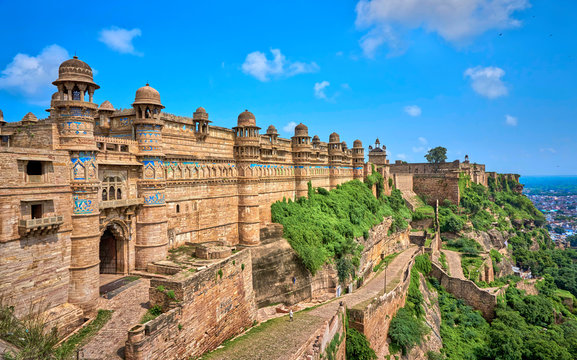¤ 19 minutes Read
Places to visit in Khajuraho
World-famous for its UNESCO-listed temples adorned with exquisite sculptures and intricate carvings. A perfect blend of history, spirituality, and art, the town offers more than just its iconic monuments. From cultural dance festivals and vibrant markets to nearby waterfalls and wildlife sanctuaries, Khajuraho promises visitors a unique journey through heritage, culture, and natural beauty.
Wiki Link: Places to visit in Khajuraho

Kandariya Mahadev Temple
The largest and most magnificent temple in Khajuraho, dedicated to Lord Shiva. Built in the 11th century by King Vidyadhara, it stands as a masterpiece of Chandela architecture. The temple is adorned with nearly 900 intricate sculptures, depicting gods, goddesses, celestial beings, musicians, and erotic figures.
Its towering shikhara rises over 30 meters, symbolizing Mount Meru, the mythical axis of the universe. The sanctum houses a shivling, representing the divine energy of Lord Shiva.

Adinath Temple
A Jain temple dedicated to the first Tirthankara, Adinath, blending Hindu and Jain architectural influences.

Ghantai Temple
A ruined Jain temple known for its impressive carved pillars and motifs of celestial beings.

Matangeshwar Temple
An active temple dedicated to Lord Shiva, holds special significance during the Shivratri festival.
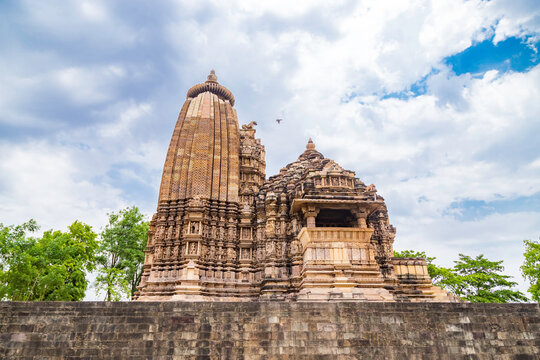
Vamana Temple
Dedicated to Vamana, the dwarf incarnation of Lord Vishnu, featuring delicate carvings of celestial nymphs.
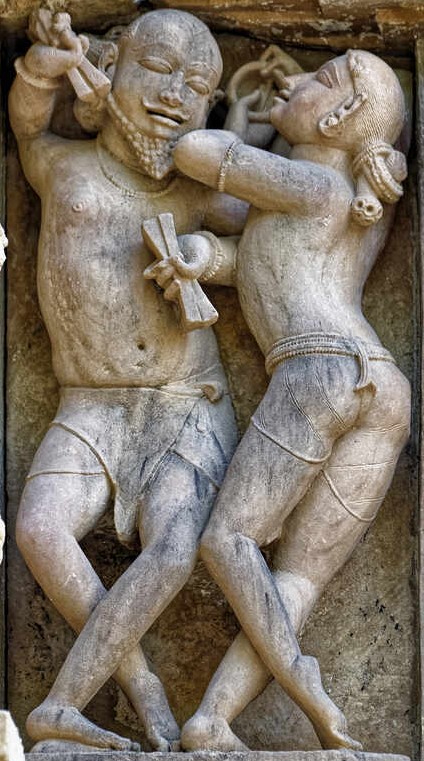
Lakshmana Temple
One of the oldest and best-preserved temples in Khajuraho, the Lakshmana Temple is dedicated to Lord Vishnu. Commissioned by King Yashovarman in the 10th century, it exemplifies the Nagara style of temple architecture.
The temple is known for its elaborate carvings that depict scenes from mythology, daily life, and spiritual symbolism. The sanctum houses a three-headed idol of Vishnu, known as Vaikuntha Vishnu, representing his universal form. Its detailed friezes and ornate sculptures make it a treasure trove for history and art enthusiasts.

Javari Temple
A small but beautiful temple dedicated to Lord Vishnu, admired for its intricate façade and detailed sculptures.

Brahma Temple
One of the rare temples made of granite, dedicated to Lord Brahma, showcasing simple yet significant architecture.

Beejamandal Temple Ruins
Remains of a massive unfinished temple complex, believed to be one of the largest built by the Chandelas.

Archaeological Museum
A museum showcasing a rich collection of sculptures, inscriptions, and artifacts from Khajuraho’s history.

Vishwanath Temple
Dedicated to Lord Shiva and is admired for its artistic beauty and spiritual significance. Built in the early 11th century, it features a grand shikhara and intricately carved panels depicting celestial nymphs, gods, and animals.
The temple once housed a massive Nandi bull idol, which still stands facing the sanctum. Its carvings showcase the richness of medieval temple art, blending devotion with aesthetics. The temple’s architecture reflects the Chandela dynasty’s mastery of stonework. For devotees and art lovers, it is both a religious site and a heritage landmark.
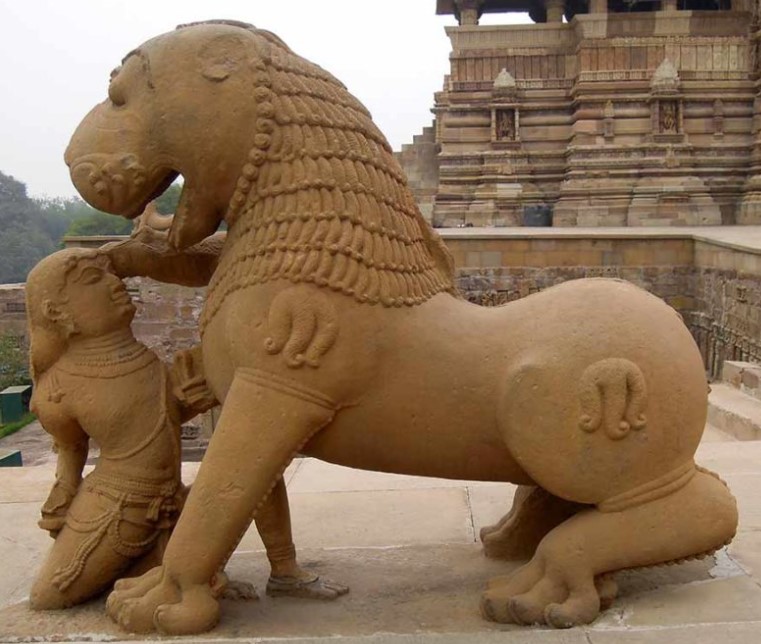
Devi Jagdamba Temple
A beautifully decorated temple dedicated to Goddess Parvati, admired for its richly detailed sculptures and artistic beauty.

Dulhadev Temple
The last of the Chandela temples, dedicated to Lord Shiva, featuring stunning images of apsaras and celestial maidens.

Parsvanath Temple
The largest Jain temple in Khajuraho, dedicated to Parsvanath. It stands out for its artistic carvings of celestial beings and everyday life.

Chitragupta Temple
Dedicated to Surya, the Sun God. Built around the 11th century, it features a striking idol of Surya riding a chariot pulled by seven horses. The temple walls are adorned with carvings of celestial beings, apsaras, and erotic sculptures typical of Khajuraho.
Its sanctum is beautifully designed, allowing natural light to enhance the idol’s radiance. This temple highlights the diversity of deities worshipped in Khajuraho’s temple complex. A visit here combines spiritual devotion with an appreciation of rare sun-worship architecture.
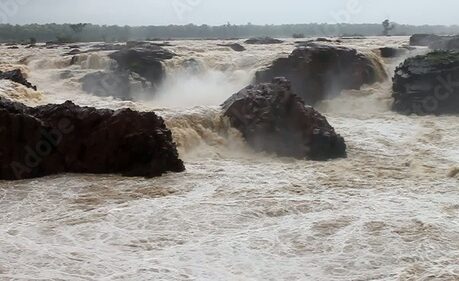
Raneh Falls
Located about 20 km from Khajuraho, is a natural wonder known for its striking canyon of multicolored granite rocks. Formed by the Ken River, the gorge displays hues of pink, red, and grey, creating a breathtaking landscape.
The waterfall is most spectacular during the monsoon, when water gushes through the rocky valley. Surrounded by forests, it is also a great spot for birdwatching and photography. The site’s natural beauty contrasts with the man-made marvels of Khajuraho’s temples. For nature enthusiasts, Raneh Falls is a refreshing escape into the wilderness.

Benisagar Lake
A serene lake ideal for boating, picnics, and enjoying sunsets in a peaceful setting.

Gangau Dam
A scenic dam site where the Ken and Simri rivers meet, offering beautiful landscapes and birdwatching.

Madla Village
A rustic village near Panna National Park, famous for handicrafts and its cultural rural charm.

Dhubela Museum
A museum showcasing artifacts, weapons, and sculptures, housed in the palace of Maharaja Chhatrasal.

Panna National Park
Located around 45 km from Khajuraho, Panna National Park is a renowned tiger reserve and a haven for wildlife lovers. Spanning over 500 square kilometers, it is home to tigers, leopards, sloth bears, antelopes, and over 200 bird species.
The park’s terrain is diverse, with plateaus, gorges, teak forests, and the Ken River adding to its scenic charm. Jeep safaris offer thrilling opportunities to spot big cats and other wildlife in their natural habitat.

Ken Gharial Sanctuary
A sanctuary along the Ken River, home to gharials, crocodiles, and migratory birds, perfect for wildlife enthusiasts.

Ajaygarh Fort
An ancient hilltop fort offering panoramic views of the Vindhya ranges and a touch of history.
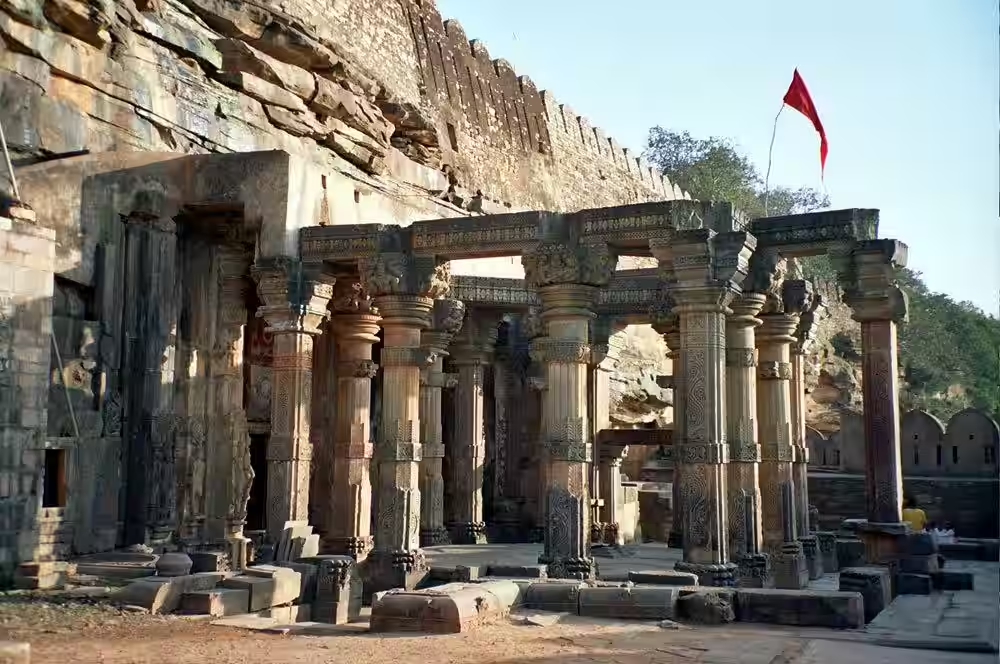
Kalinjar Fort
A grand fort with temples, palaces, and gates, known for its historical and architectural significance.

Pandav Falls
Situated near Panna National Park, is a picturesque waterfall cascading into a serene pool. According to legend, the Pandavas from the Mahabharata spent time here during their exile, giving the falls its name. The surrounding caves and lush greenery add a mystical aura to the site.
The crystal-clear waters make it a popular spot for relaxation and photography. Best visited during the monsoon and post-monsoon seasons, the falls offer a refreshing retreat from the heat. It is an ideal spot to combine natural beauty with mythological charm during a Khajuraho trip.
Khajuraho Blogs
- Uttar Pradesh Cultural guide
- Places to visit in Varanasi
- Places to visit nearby Varanasi
- India’s most popular destination
- India’s archaeological marvels
Recommended articles
- Uttar Pradesh Cultural guide
- Places to visit in Varanasi
- Places to visit nearby Varanasi
- India’s most popular destination

